 Basil oil and basil leaves share a rich history with modern humans. Indigenous societies were the first people to discover the amazing properties of basil and the oil derived from the plant. It has been cultivated around the world for thousands of years. During the early years it was also used to treat headaches as well as to enhance the sex drive.
Basil oil and basil leaves share a rich history with modern humans. Indigenous societies were the first people to discover the amazing properties of basil and the oil derived from the plant. It has been cultivated around the world for thousands of years. During the early years it was also used to treat headaches as well as to enhance the sex drive.
Pliny, the Roman author and naturalist, claimed it was an aphrodisiac, and the Greek physician Dioscorides prescribed it for headaches, but his contemporaries used it as horse feed during breeding season. In modern aromatherapy, basil oil is used to lift the spirits and cheer the mind, especially when melancholy and sorrow overwhelm active thoughts.
Being a polymorph, basil oil comes in different strengths and is offered in a variety of scents and compositions. Scented basil oils range from lemon, clove, and cinnamon in aroma, and when green and purple curly lettuce leaf basil plants are steam distilled, they yield another type of oil.
There are two varieties that are used to extract large quantities of basil essential oil in this modern aromatherapy era. The first variety is Exotic basil, which is grown and distilled on Reunion Island in the Indian Ocean. The European type of basil is also used to produce commercial essential oil. It was originally harvested and distilled in Southern France, but is now cultivated in America as well. The constituents that give basil oil its flavor and aroma are methyl chavicol, linalool, and eugenol.
Reunion basil contains camphor but very little linalool. It has a harsh, woody aroma and is not used on its own in aromatherapy, since those qualities don’t conform to the energizing and refreshing elements found in a sense of well-being. Basil oil is often mixed with lavender, geranium, clary sage, and bergamot to give it balance and a more pleasing aroma. Sensitive skin may react to the methyl chavicol, so basil oil is often diluted with another carrier like vegetable oil to prevent skin redness.
The basic uses for essential basil oil are to stimulate the adrenal cortex, decrease anxiety, depression, and fatigue, and to treat symptoms of bronchitis, indigestion, gout, fever, and colds. It has hot and cold qualities that can pep up circulation or invigorate sluggish skin. When basil is combined with thyme, it’s a powerful antiseptic.
In aromatherapy, basil oil is used in baths, inhalers, massages, and facial masks. Basil is still popular as a culinary seasoning, but the essential oil of basil is a valuable friend that can help relieve common cold symptoms as well as rejuvenate and promote emotional stability. Basil has been a soul protector as well as a body protector for centuries. It’s no wonder the early Egyptians offered it to the gods.

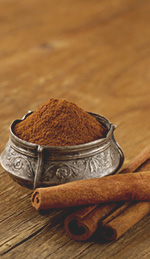 Ancient texts list cinnamon as an important ingredient in incense and in perfume making over 4,000 years ago. The Egyptians used it every day thanks to its irresistible aroma and taste. The Hebrew Bible mentions cinnamon several times. Moses said the oil should be used in the holy anointing, and the Book of Proverbs mentions it as a perfume for a lover’s bed. Cinnamon was also a component in Hebrew incense (Ketoret), and it was described in the Hebrew Talmud as Haketoret.
Ancient texts list cinnamon as an important ingredient in incense and in perfume making over 4,000 years ago. The Egyptians used it every day thanks to its irresistible aroma and taste. The Hebrew Bible mentions cinnamon several times. Moses said the oil should be used in the holy anointing, and the Book of Proverbs mentions it as a perfume for a lover’s bed. Cinnamon was also a component in Hebrew incense (Ketoret), and it was described in the Hebrew Talmud as Haketoret.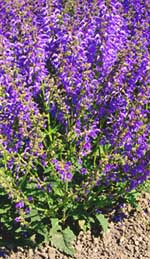 Clary sage is one of those ancient herbs that worked magic when it was put into the eye to relieve mucus, or when it was combined with Muscatel wine to produce a heightened level of intoxication. That ability earned it the title of “muscatel sage” in Germany. During the Middle Ages it was called “Oculus Christi” because it had the ability to clear foreign objects out of the eye and increase vision. In 16th-century England it replaced hops in the beer-brewing process.
Clary sage is one of those ancient herbs that worked magic when it was put into the eye to relieve mucus, or when it was combined with Muscatel wine to produce a heightened level of intoxication. That ability earned it the title of “muscatel sage” in Germany. During the Middle Ages it was called “Oculus Christi” because it had the ability to clear foreign objects out of the eye and increase vision. In 16th-century England it replaced hops in the beer-brewing process.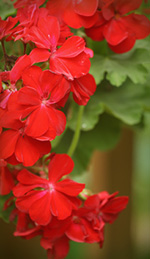 Elegant and colorful geraniums graciously compliment gardens across America, but they are native to South Africa, Madagascar, Morocco, and Egypt. Geraniums were introduced to Spain, Italy, France, and England in the 17th century, and they made their way to America around the same time.
Elegant and colorful geraniums graciously compliment gardens across America, but they are native to South Africa, Madagascar, Morocco, and Egypt. Geraniums were introduced to Spain, Italy, France, and England in the 17th century, and they made their way to America around the same time.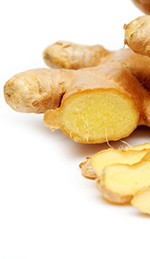 Ginger has been used in Asian medicine for thousands of years. It was written about in Chinese and Sanskrit texts, and the Romans and the Greeks had a lot to say about this versatile herb as well. Europeans started to use it as a spice and condiment around the 10th century, and it was brought to America sometime during the 16th century.
Ginger has been used in Asian medicine for thousands of years. It was written about in Chinese and Sanskrit texts, and the Romans and the Greeks had a lot to say about this versatile herb as well. Europeans started to use it as a spice and condiment around the 10th century, and it was brought to America sometime during the 16th century.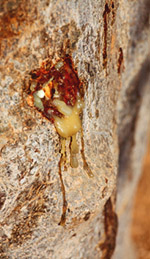 Myrrh has rock-star status around the world thanks to gold and
Myrrh has rock-star status around the world thanks to gold and 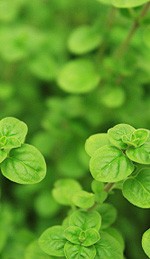 The Greeks called it “joy of the mountain,” and the Italians called it “flavor enhancer”, and it eventually became a signature ingredient in Italian recipes. Oregano has been used by tribal healers for over 5,000 years. Ancient medicine men believed oregano could eliminate dangerous fungi and bacteria as well as eliminate pain and inflammation. The Greek goddess Aphrodite reputedly created oregano as a symbol of happiness, so bridal couples were crowned with garlands of oregano, and the plants were placed on tombs so the departed could find peace in the next life.
The Greeks called it “joy of the mountain,” and the Italians called it “flavor enhancer”, and it eventually became a signature ingredient in Italian recipes. Oregano has been used by tribal healers for over 5,000 years. Ancient medicine men believed oregano could eliminate dangerous fungi and bacteria as well as eliminate pain and inflammation. The Greek goddess Aphrodite reputedly created oregano as a symbol of happiness, so bridal couples were crowned with garlands of oregano, and the plants were placed on tombs so the departed could find peace in the next life. The Greeks were using
The Greeks were using 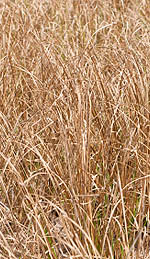 Admirers of the patchouli bush say it is the most distinct herb in the botanical kingdom in terms of fragrance and aroma. One whiff of
Admirers of the patchouli bush say it is the most distinct herb in the botanical kingdom in terms of fragrance and aroma. One whiff of  The Egyptians were big fans of
The Egyptians were big fans of